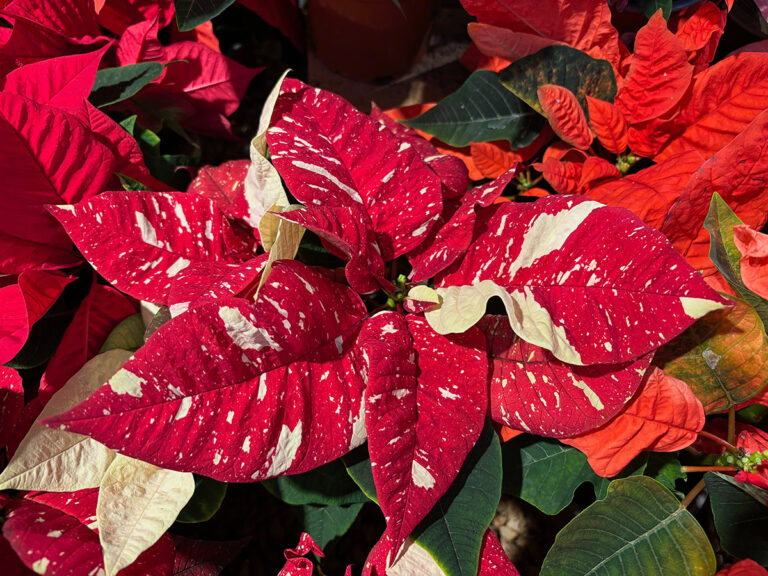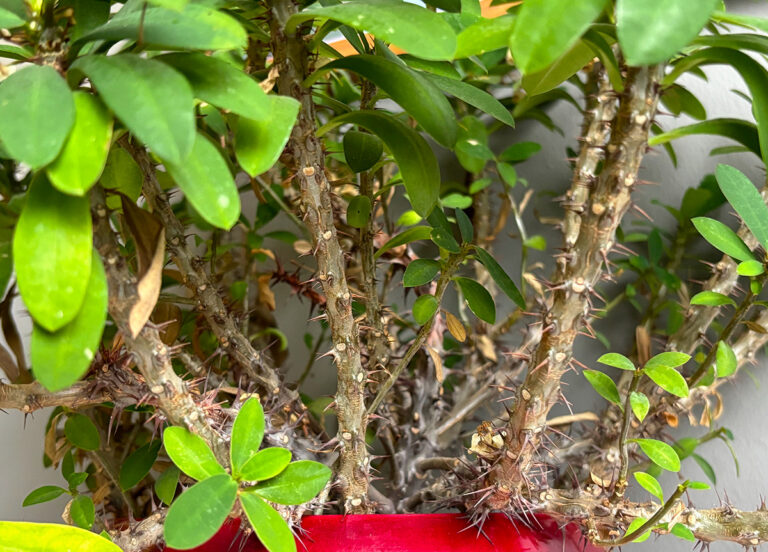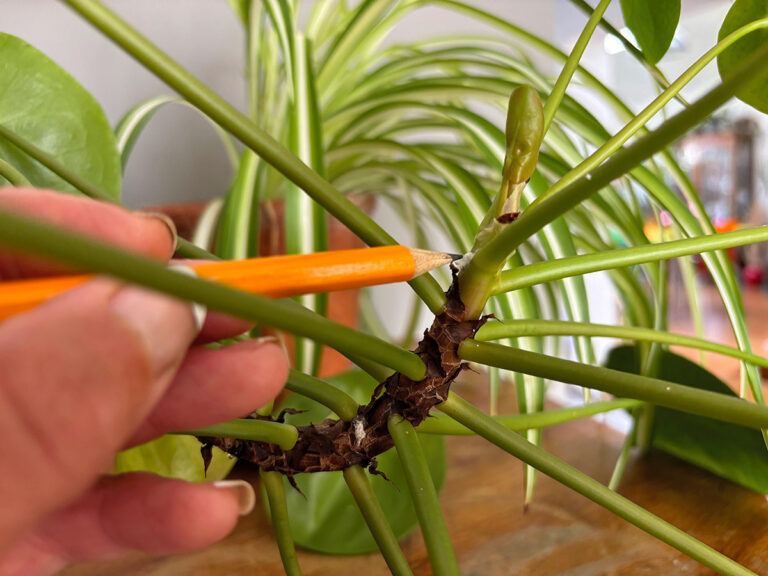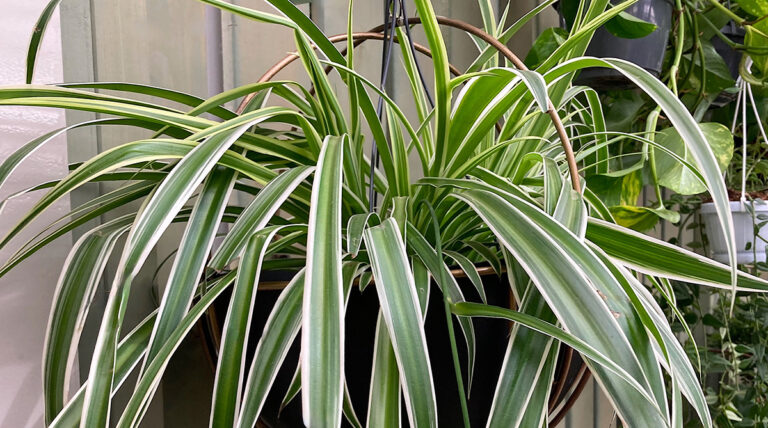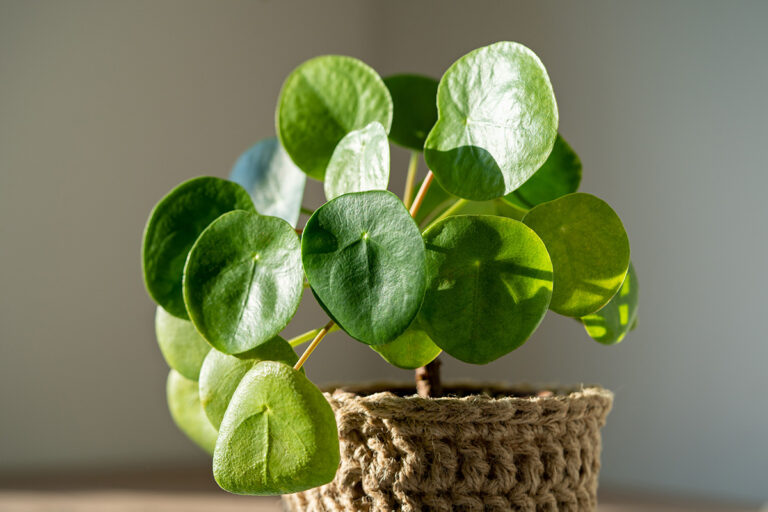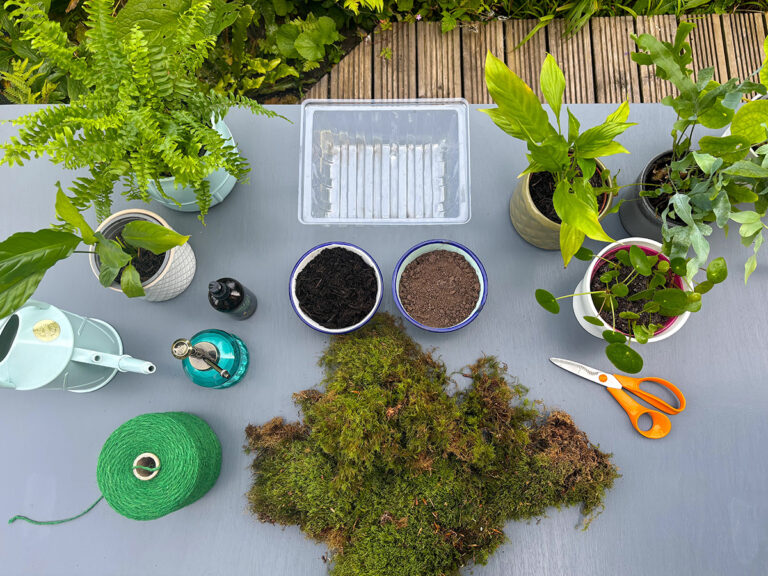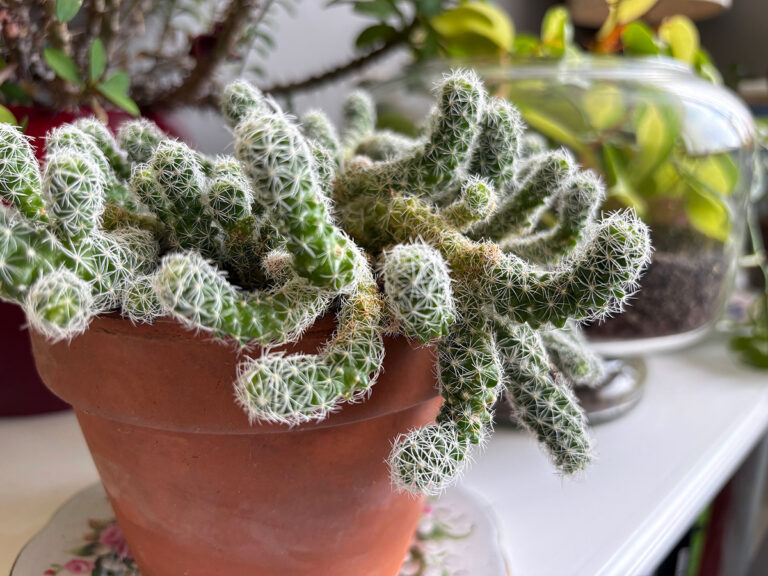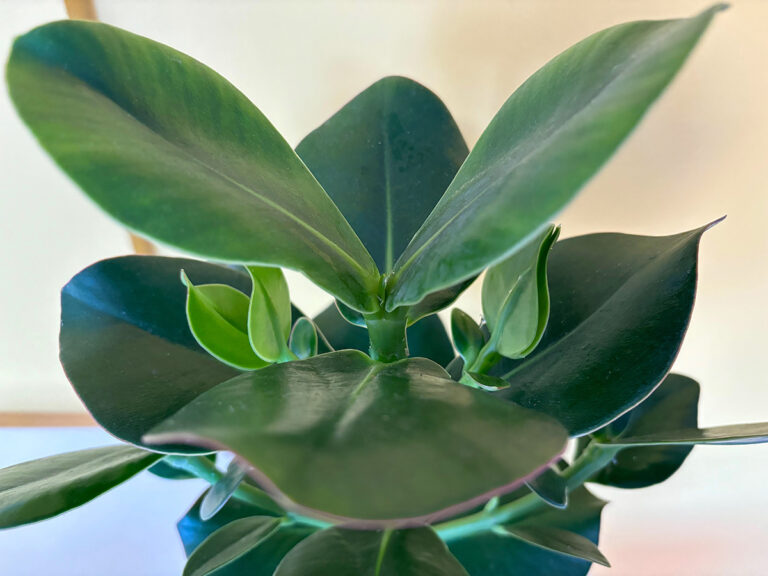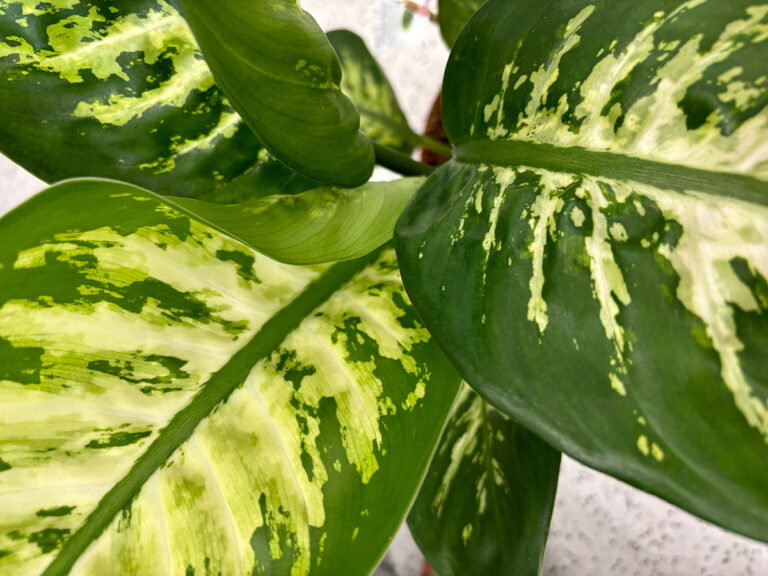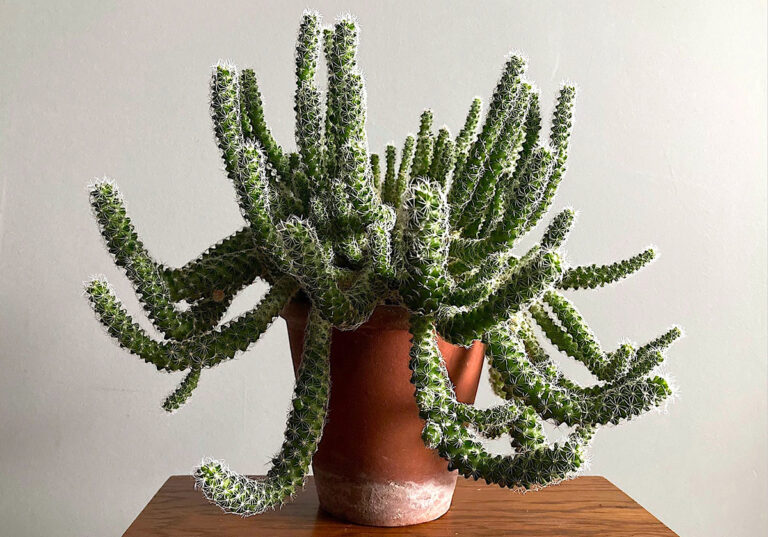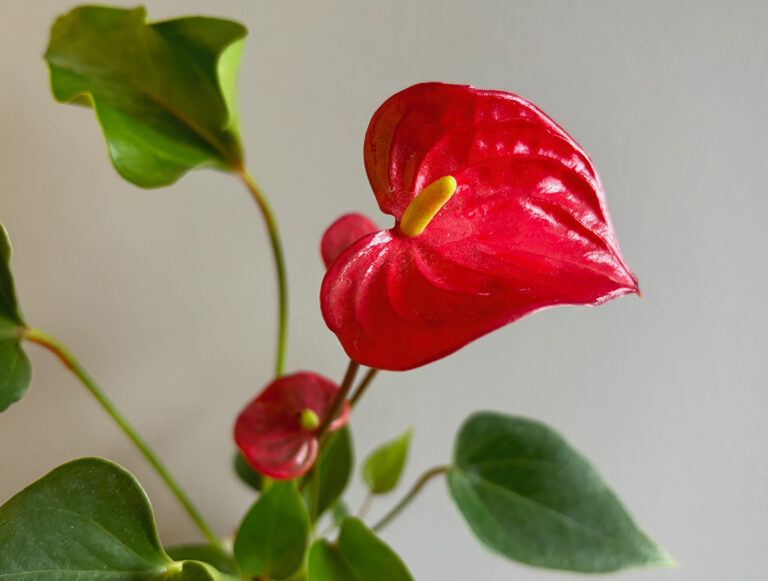Clusia rosea is a succulent perennial tree which has become a trendy, low-maintenance houseplant. Native from the Florida Keys to Venezuela encompassing all the glorious tropical Caribbean in between this innocent looking plant is actually deemed invasive in Hawaii.
Clusia is a hemiepiphyte; seeds dropped by birds onto trees (or rocks) grow as epiphytes obtaining nutrients and moisture from the surrounding air; then over time the clusia sends down aerial roots and once touches the ground engulfs the original tree with strangler-like roots to take its place. Luckily we need not worry about this happening indoors; unlike this speedy wild grower, I find it a slower growing houseplant and can be easily snipped to keep in shape if the plant becomes leggy.
Symmetrical paddle-shaped green leaves shoot from a sturdy central stalk to produce a neat, balanced, upright houseplant. So how can we keep our plants in tip top condition?
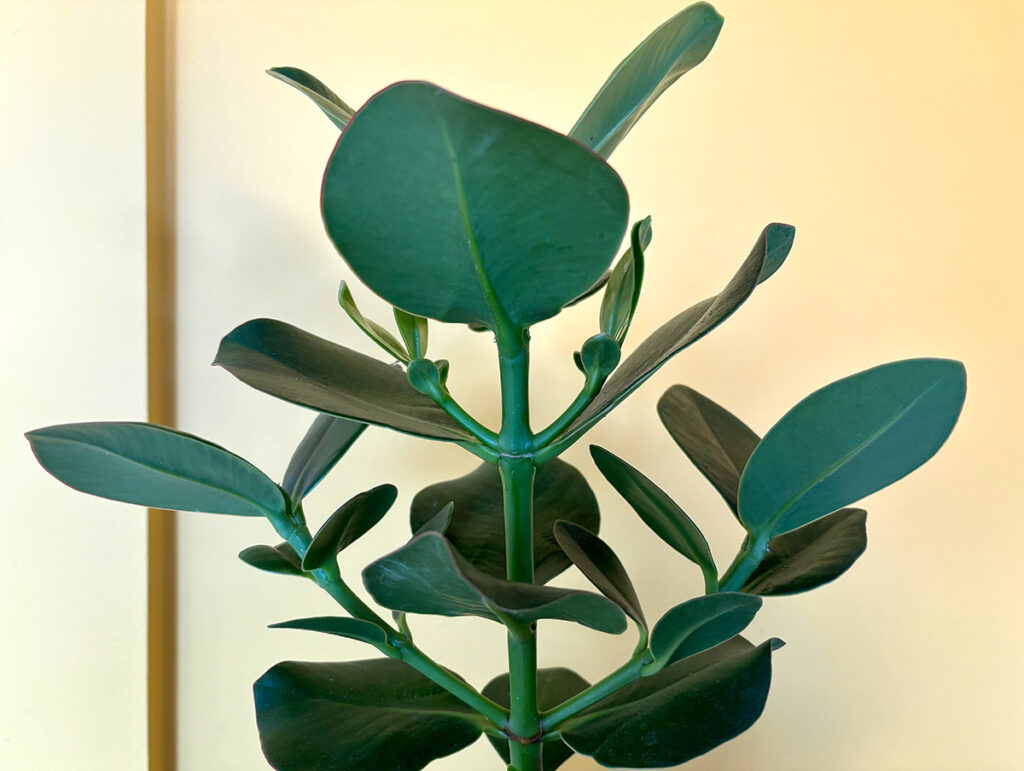
Light
Clusia seek bright indirect light but as with many houseplants too much of a good thing can be bad; keep this plant away from intense south facing windows to avoid scorching the leaves. Place by a light east or west facing window or utilise the diffused light of a bathroom window.
Clusia have large thick leaves which attract household dust like a magnet so routinely get a damp cloth and dust the leaves which will allow the plant to photosynthesise unhindered.
For an extra boost try Plantsmith’s Beautifying Leaf Shine Spray whose cold-pressed natural oils act as a conditioner and natural anti-fungal protector, clearing built-up dust and grime from foliage and enhancing the leaves’ natural shine.
Regularly turn the plant pot to keep stems growing upright allowing all sides to get equal light rather than the plant leaning to one side over time.
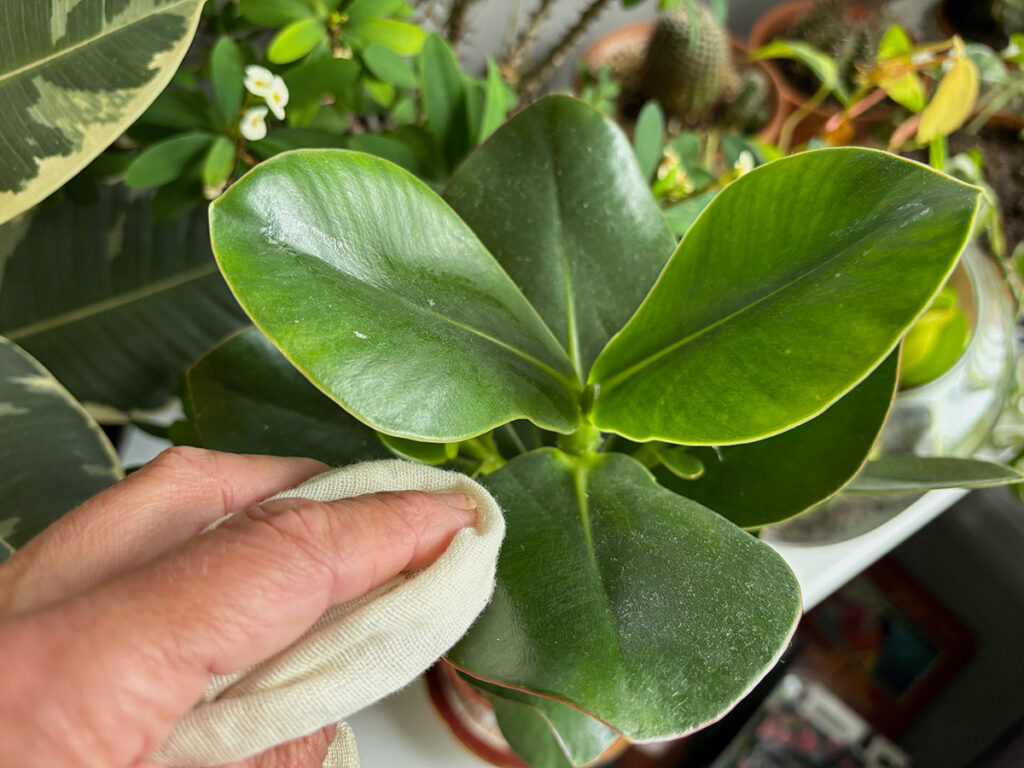
Water
Clusia are resilient plants; although they love moisture they can cope with drying out too which makes them a good houseplants for busy people.
Let your plant tell you when it wants watering. As with many houseplants wait until the top inch of soil is dry before watering with a view to water every week from spring to summer and decrease watering over the winter months. Adjust your watering schedule accordingly as to if your plant is holding its moisture or drying out quickly.
Recreating tropical climes can be difficult in our urban homes so mist regularly between waterings. If there is not space to house this plant permanently in a bathroom give it a ‘holiday’ every few weeks to bathe in the welcomed humidity from steamy showers. Don’t be afraid to move your plants, after all we cannot house ALL of our houseplants in the bathroom, even if they would prefer it.
Temporarily increase humidity surrounding your houseplant by misting, this will help compensate for our home’s dry air; increase misting in hot weather and place the pot on a pebble tray.
Spray foliage with rainwater or apply nutrients as well as humidity with Plantsmith’s Perfecting Houseplant Care Mist. This is a vegan and cruelty free product which contains 17 essential plant-boosting nutrients and will help maintain houseplant health and resilience against pests and diseases.
Temperature
High humidity is favourable – think warm, humid greenhouse and you are on track. Room temperatures around 15 – 29°C (60 – 85°F) are optimum. Situate your plant away from fluctuating temperatures, avoid radiators and drafts from doorways and your autograph tree should be happy.
Feeding
Feed Clusia rosea roughly once a month throughout March to September. Try Plantsmith’s Fortifying Houseplant Feed which is a houseplant specific formula to aid plant health and promote glossy leaves. Itcontains a balance of 13 essential nutrients and minerals including iron, potassium, magnesium, kelp and essential macro and micro nutrients which will encourage strong growth.
Shake the bottle then add 5 ml (approx. 4 pumps from 500ml bottle) or dilute two full pipettes from the 100ml bottle per litre of tepid rainwater; mix then water in to the soil.
Soil
The autograph tree needs loose free-draining, sandy substrate so you can make your own by mixing compost with perlite, sharp sand and bark for aeration or use a ready-made houseplant compost like Plantsmith’s peat-free coconut coir. This by-product of the coconut industry is a dedicated houseplant compost containing slow-release nutrients which can nourish houseplants for up to six months and just one light brick makes up to 10 litres of compost once activated by water.
Plant pots need plenty of drainage holes so roots are not left sitting in water as they may rot. Repot your houseplant every couple of years and always wear gloves and wash your hands after repotting.
Propagation
Propagating an autograph tree couldn’t be easier, just stick a stem in water. Snip off a 10cm length of stem just above a leaf, ideally with about three leaves attached. Make sure the stem but not the leaves are touching the water; after a few weeks roots will begin to appear. Change the water every few days. Once you have a strong set of roots then transplant to a pot of free-draining peat-free compost or you can observe the root system by growing hydroponically; just add a few drops of feed to the water. Enjoy your new baby houseplant!
Be careful when handling the stems as the sap can cause skin irritations so consider wearing gloves.
Pests
Clusia are not prone to pests but keep your eye out for the usual suspects… sap suckers like mealybugs,spider mites or scale insects. Keeping your houseplants healthy by providing optimum light, feed and well-drained soil to ensure plants are not under stress and this should help ward off unwanted visitors.
If you do spot pests in the houseplant’s leaf joints or foliage remove them by hand and regularly spray with Plantsmith’s Bug Control Spray to deter infestations.
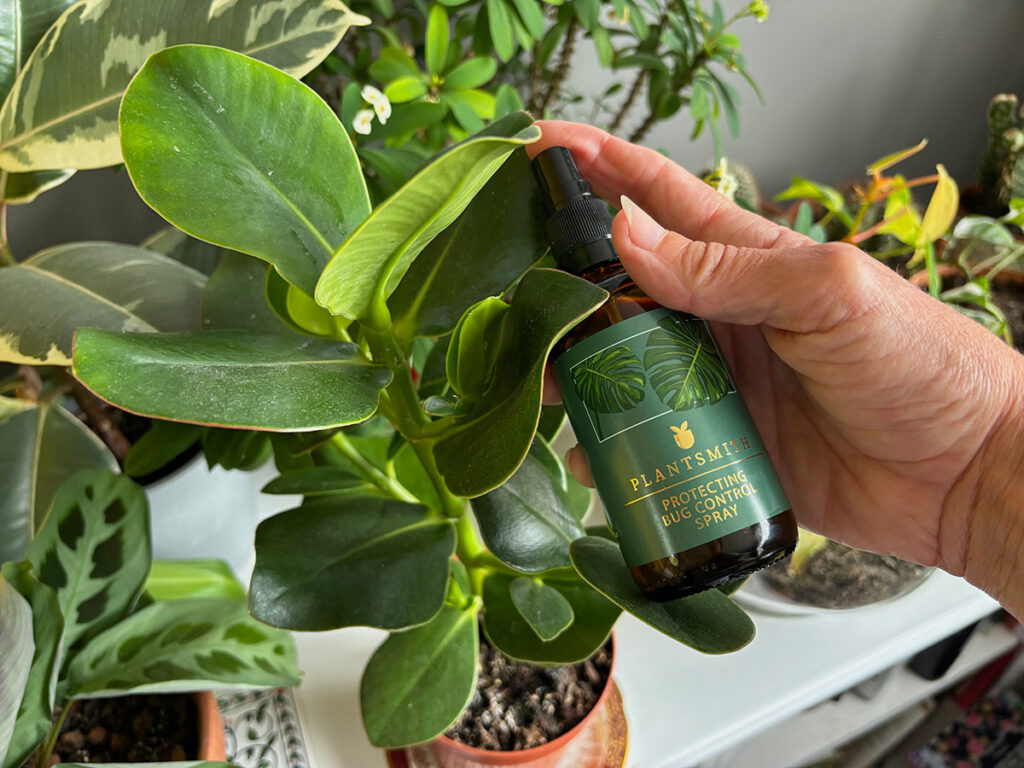
However careful you are with plant hygiene fungus gnats can appear as if from nowhere and plague soil. Plantsmith have created a solution to this problem with their latest product which aims to protect houseplant soil. Plantsmith’s Natural Fungus Gnat Barrier & Pot Topper is a 100% natural topper and a sustainable by-product from olive production made from crushed olive pomace. This eco-barrier works by preventing gnats and other root-feeding pests from laying eggs in the soil of houseplant compost. It also has the added bonus of slowing down evaporation so the soil does not dry out so quickly.
Problem Solver
Safe for pets?
If ingested Clusia rosea is toxic to cats, dogs and humans with the fruit of the plant deemed the most toxic and even though it is unlikely to form fruit in our homes just be mindful of the plant’s sap toxicity so keep out of the way of little paws!
Yellow leaves
Yellow or discoloured leaves can indicate a number of factors. It can be a sign of stress from low humidity, temperature fluctuations, over or underwatering or even too much direct sunlight. Simply snip off damaged foliage and adjust your watering schedule or change where the plant is located within your house. Sometimes looking after plants can be a bit of trial and error and we just need to listen to when our houseplants are trying to give us a hint that sometime is not right.
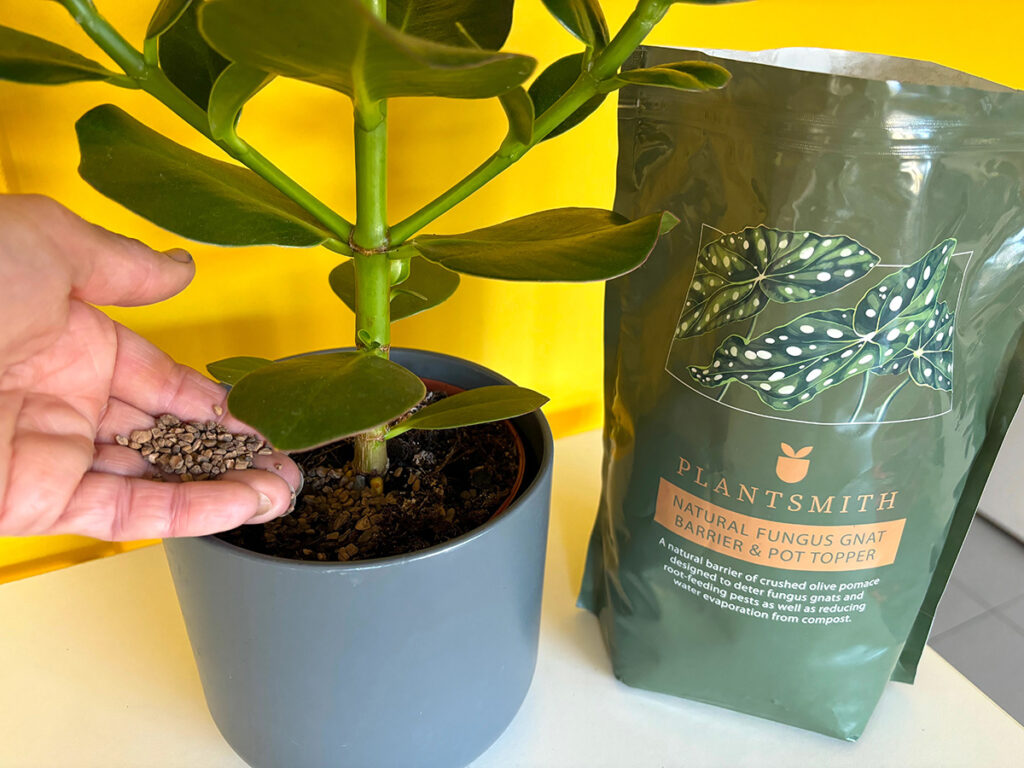
Root rot
Ease back on watering if roots appear to be rotting, you may have over done it. Wait until the soil is dry to the touch before rewetting again. Give roots a break; good drainage is the key to success.
Fun Facts
Why is this plant named the autograph tree? It is possible to write on its leaves. This plant has tough, thick, waxy leaves and should you feel inclined you could carve a name into them with your finger nail. Even after the foliage grows the autograph will remain… although it does seem a shame to deface a healthy plant so try and resist the temptation!
In the wild the autograph tree can grow to nine metres or higher, smothering other plants but don’t panic it won’t reach those dizzy heights confined in a pot in your living room; it will remain fairly compact. Clusia rosea ‘Princess’ is a popular houseplant choice.
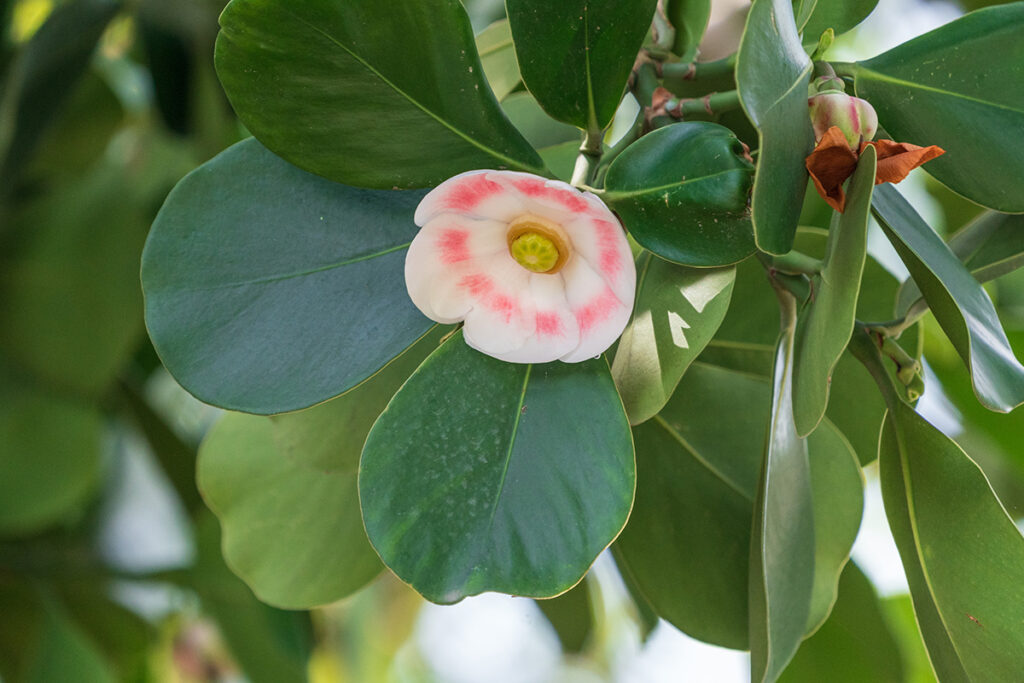
In its native habitat the autograph tree produces beautiful pink and white flowers all-year-round which turn into stunning seed heads. Humidity needs to be consistently high to achieve this so it is unlikely we can achieve this at home but if you have a steamy conservatory then you never know!





